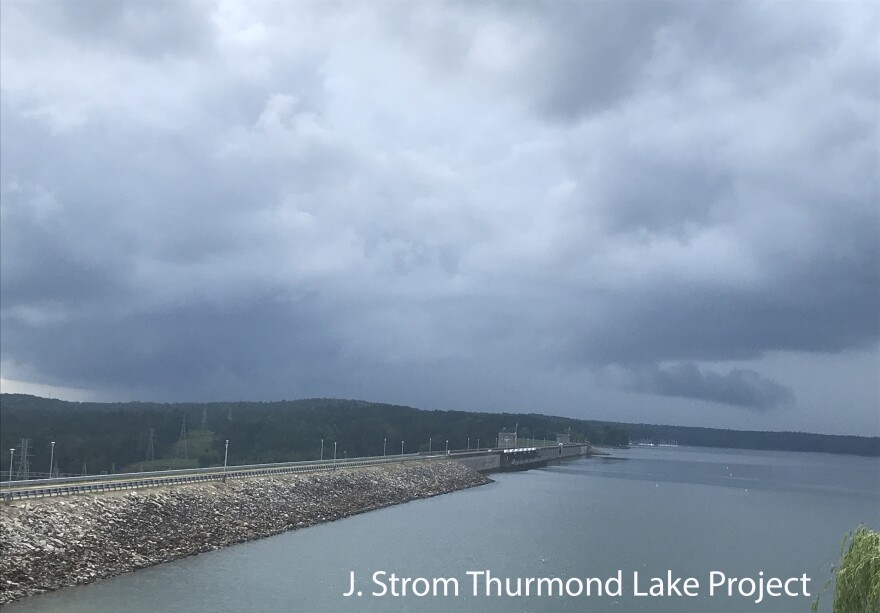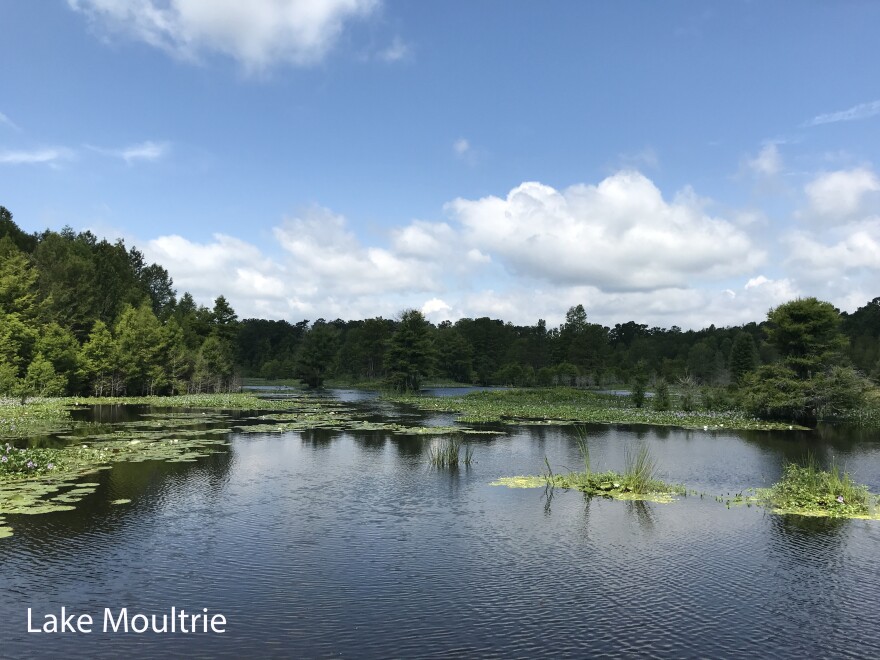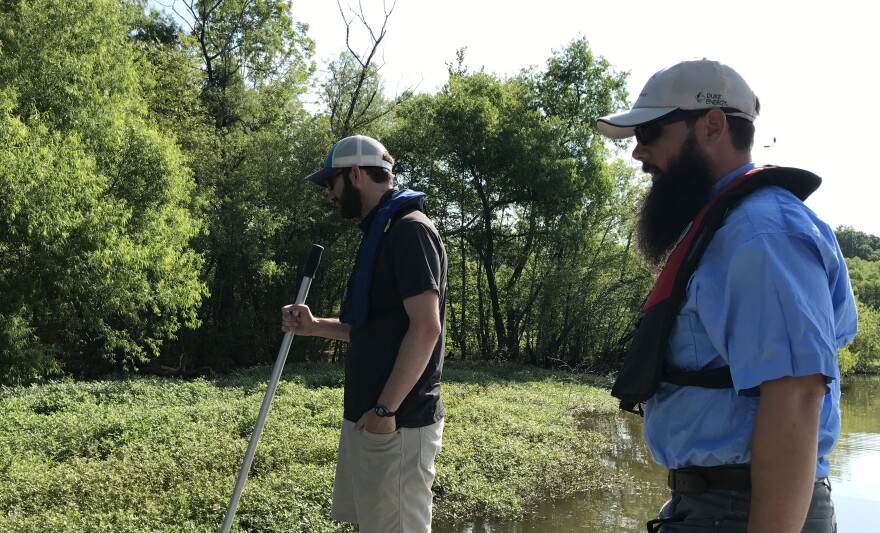South Carolina’s freshwater lakes and ponds are as vibrant as they come, full of pretty plants with pretty names like water primrose and water hyacinth. The only trouble is, these plants shouldn’t be here.
They, and about two dozen other aquatic plants – some with more ominous names like arrowhead and alligator weed – are invasives; uninvited residents that find a foothold in the state’s lakebeds and coastlines and surfaces and then just choke out the native plant life.

And if that isn’t bad enough, there are invasives like hydrilla – a shrubby-looking plant that harbors a nasty bacterium known as aetokthonos -- which translates to “eagle killer.” That bacterium contributes to the death of waterfowl and the eagles that feed on them.
I visited three lakes – Lake Wylie, where North and South Carolina meet, near Charlotte; Lake Moultrie in Berkeley County, north of Charleston; and Lake Strom Thurmond, along the Savannah River, where South Carolina borders Georgia, near Augusta – to find out what is in the water that shouldn’t be, what wildlife experts are doing about it, and what boaters, swimmers, fishers, and homeowners can do to help identify outbreaks of exotic, nonnative plant life in South Carolina’s freshwater repositories.
- Listen to the stories here:



What You Can Do To Help Control Pest Plants
According to the Lake Wylie Marine Commission, these are some of the best ways to keep invasive plants from spreading:
- Remove any visible mud, plants, fish or animals before transporting equipment.
- Eliminate water from equipment before transporting.
- Clean and dry anything that comes into contact with water (boats, trailers, equipment, clothing, dogs, etc.).
- Never release plants, fish or animals into a body of water unless they came out of the body of water.
- Don’t release aquarium animals or plants into the lake
- Report aquatic weed problems
How to Report Suspected Invasive Aquatic Plants in South Carolina

The Palmetto State has a small army – or maybe small navy – of professionals who combat invasive aquatic plants year-round. But helping to identify unusual new plants often starts with everyday people who spot something that seems, as Brett Hartis of Duke Energy puts it, “kind of weird” on the water or around docks.
If you come across a plant in the water – especially one that seems to be growing quickly near docks or drainage areas – and it looks like it doesn’t belong, aquatic control professionals ask you to:
- Take an up-close photo with your phone.
- Record where and when you saw the plant so professionals can go and assess.
- Contact the appropriate wildlife biologist or professional by phone, email, or online.
Who to Call:
Santee Cooper: You can report nuisance or questionable vegetation to Biological Services at 843-761-4078 or 843-761-8000 ext. 4564. Also you can email AquaticPlantControl@santeecooper.com or report online.
Lake Wylie: Report invasive plants to the lake Wylie Marine Commission at www.LakeWylieMarineCommission.com or email eparker@centralina.org
Lake Strom Thurmond (J. Strom Thurmond Reservoir): Contact either Ken Boyd, chief ranger of Forest, Fish and Wildlife at Lake Strom Thurmond, by email at Kenneth.H.Boyd@usace.army.mil, or at 864-333-1111. You can also call Evan Brashier, the lake’s conservation biologist at 864-333-1159 or Evan.G.Brashier@usace.army.mil.
Around the State: You can always contact the South Carolina Department of Natural Resources’ Aquatic Nuisance Species Program with questions or concerns about suspicious aquatic plants, at www.dnr.sc.gov/water/envaff/aquatic/
You can also contact the South Carolina Exotic Pest Plant Council, at www.se-eppc.org/southcarolina/
Or contact the University of South Carolina Herbarium, which also collects information on suspicious plants in the state. Call 803-777-8196 or email Curator John Nelson at nelso@sc.edu.
A reference of aquatic plants not native to South Carolina is available through the state Department of Natural Resources, at http://www.dnr.sc.gov/water/envaff/aquatic/img/apmprogram10.pdf


